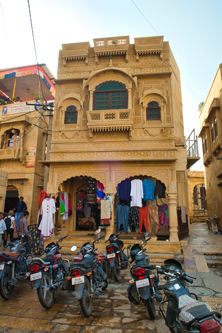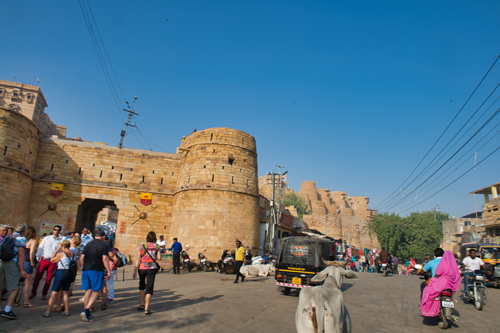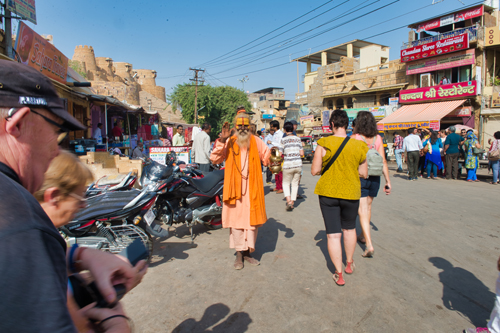Pokharan - Jaisalmer
 Even if our first days of travel were rich in discoveries we arrive in the golden city, so named by the reflection of the sun in the yellow sandstone of its construction. Even if our first days of travel were rich in discoveries we arrive in the golden city, so named by the reflection of the sun in the yellow sandstone of its construction.
The fortified city was founded in 1155 by Rao Jaisal, Raja Rajput.
Located on a hill, it once controlled the passage of many caravans on the road to Arabia and Persia.
Several inhabitants are still living in the fortress, which makes us think of the city of Carcassonne in France.
It has been included on the list of World Heritage by UNESCO in 2013. You can admire the beautiful havelis with pink sandstone facades chiseled as fine as wood and balconies and windows.
The Maharawal Palace is unique with its seven floors gives us the image of a very particular architecture that adds to the charm of a place out of the ordinary.
Surprises are the order of the day, with the Gadi Sagar Artificial Lake and the surprising buildings that we could admire.
The cenotaphs of Bada Bagh in the Jaiselmer ma rajahs have raised important questions for us in Europe.
Cremation is already used for our dead, but not in this ancestral spirit of customs well established for centuries in the Hindu religion.
Our guide points out that India is a country respectful of all its religions.
There are Christian and Muslim cemeteries, but the Hindu cults demand that their dead be cremated.
It takes up to 350 kg of wood for the ceremony.
The deceased is deposited on a pile of wood covered by another.
After the hours of cremation, his remains, some bones and skull, are recovered and placed in a jar.
The family takes care of the pilgrimage to one of the sacred rivers, to deposit the remains.
Without describing all the facets of this cult Indians Indians religion are always faithful.
We could see the cremation sites that for us are surprising.
All this to arrive at this site of cenotaphs of Ba daBag h, raised to the memory of Maharadjahs of Jaisalmer which are the receptacles of the souls of the ancients without any body being buried there.
Steles also recall t he satis, the women who sacrificed themselves to their husbands. What a beautiful love story ... he satis, the women who sacrificed themselves to their husbands. What a beautiful love story ...
At this point in this report, I take the opportunity to recall that in 1971, Indira Gandhi abolished the benefits that her father gave to the Maharajas at the time to bring them up to the level of all Indians.
They must now work and pay taxes like everyone else (without going into details). |
 Even if our first days of travel were rich in discoveries we arrive in the golden city, so named by the reflection of the sun in the yellow sandstone of its construction.
Even if our first days of travel were rich in discoveries we arrive in the golden city, so named by the reflection of the sun in the yellow sandstone of its construction.
 he satis, the women who sacrificed themselves to their husbands. What a beautiful love story ...
he satis, the women who sacrificed themselves to their husbands. What a beautiful love story ...







